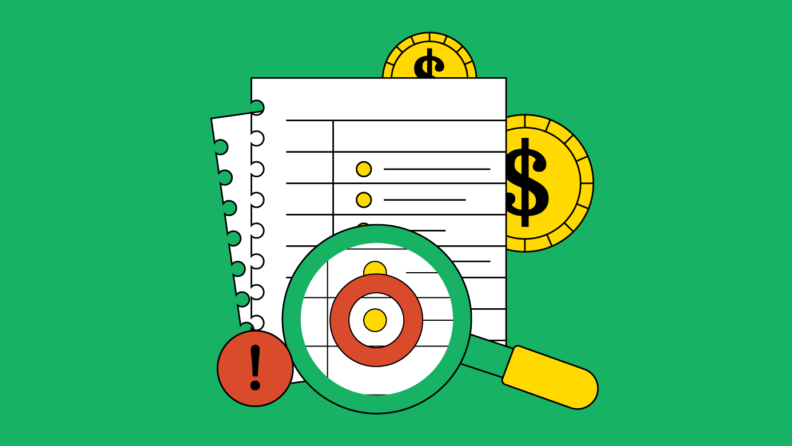You've got a ton of sales data sitting in your systems. Now what? Predictive sales analytics software can help you leverage that data to surface better insights into customer behavior and operational needs to streamline resource allocation, decision-making, and product pricing.
Let's dig a little deeper into what predictive analytics is, how it works, and how it can benefit your business.
What Is Predictive Analytics?
Generally, predictive analytics uses data, machine learning, and statistical algorithms to reveal the likelihood of future scenarios based on historical data.
Your goal in using predictive analytics is to discover what will happen in the future based on market trends, your own decision-making, and as many other factors and metrics as you can provide.
There are several models and methods for predictive analytics, including decision trees, regression, and neural networks. These are further classified under a few types of predictive analysis, including cluster, classification, and time series predictive models — each with its own uses, pros, and cons.
How Does Predictive Analytics Work?
Predictive and statistical modeling uses known future outcomes to train or develop a model that you can use to predict values for unique, different, or new data. These advanced analytics are designed to provide predictions and actionable insights that represent the probability of your target variable, like revenue, for a competitive advantage in your industry.
Types of Predictive Modeling Techniques
There are many types of analytics models, including Bayesian analysis, ensemble models, partial least squares, time-series data mining, and K-nearest neighbors. However, the three most commonly used are decision trees, neural networks, and regression.
Decision Trees
This classification model is designed to partition data into subsets based on various categories of input variables. You can use them to understand the path of someone’s decisions, with each branch of the tree representing choices and alternatives and each leaf denoting classification or decisions. Your model will try to find the single variable that splits your data into logical groups.
The decision tree is popular because it’s one of the easiest to understand. It can also handle missing values, so it’s a good place to start with variable selection.
Neural Networks
One of the more sophisticated techniques you can use in predictive analytics and business intelligence is the neural network, which is capable of modeling very complex relationships. These are so popular because they’re flexible and powerful. They can handle nonlinear relationships in data sets, and they can confirm findings from more simple techniques.
Neural networks operate based on pattern recognition, along with artificial intelligence processes that graphically analyze parameters. They work well without mathematical formulas that can relate to input and output or when there is a ton of training data.
Regression
There are two types of regression, linear and logistic, and they can estimate relationships among a variety of variables. This type of model is built to handle continuous data flow that follows normal distribution. Regression also finds key patterns in big data sets and can be used to determine how price and other metrics influence the customer experience.
Top Benefits Of Predictive Analytics

And now on to the most important part: why your business may need predictive analytics. There are many use cases and benefits of predictive analytics software, including better customer retention, data-driven decision-making, and enhanced marketing strategies. Here are a few more that may encourage you to add data analysis to your workflow.
Conversion Prediction
You want to make informed decisions when it comes to marketing campaigns and customer outreach, so use predictive analytics to discover what will increase the likelihood of a conversion and increase purchase intent.
Fraud Detection
If you want to use automation to protect your company, you can use predictive analytics to pinpoint abnormal actions that indicate fraud or other vulnerabilities in your company’s network in real time.
Increase Operational Efficiency
Whether you need to figure out how much inventory to stock for a particular season, find a better way to manage resources, or just operate more efficiently in general, data collection and analytics are the keys to predicting future events for supply chain and ecommerce needs.
Risk Reduction
Insurance claims, debt collections, and credit scores are all real-world examples of how predictive analytics is used to determine risk and reduce the likelihood that a new customer will default.
Predictive Maintenance Forecasting
If you work with equipment that needs regular maintenance, you don’t want to wait for a breakdown before taking care of your machines. With predictive analytics, you’ll have a regular timeline that can predict and prevent malfunctions.
Customer Segmentation
Dividing your customer base into specific groups can assist marketers in tailoring their content to each type of buyer. You can optimize your services based on customer data, like demographics and behavior, to increase profitability.
What You Need To Get Started

To start using predictive analytics tools right away, you need to take four simple steps:
- Figure out what problem you’re trying to solve.
- Start collecting data and finding more data sources.
- Build the correct predictive model to suit your problem.
- Verify the answers you get using neural network tools.
Many predictive analytics software options today have a self-service model that allow the layman to utilize these advanced tools without the need for an experienced data scientist. Find tools that offer tutorials, have a robust user community, and ensure an accessible customer service team to ensure success.
It's Better to Lead Than To Lag
Overall, predictive analytics software provides you with data science tools to help you automate analytics and speed up your decision-making process—aka uncover leading indicators of success.
These insights, coupled with a proven sales forecasting framework, will help you build your strategy and hit your targets for the coming quarters.


